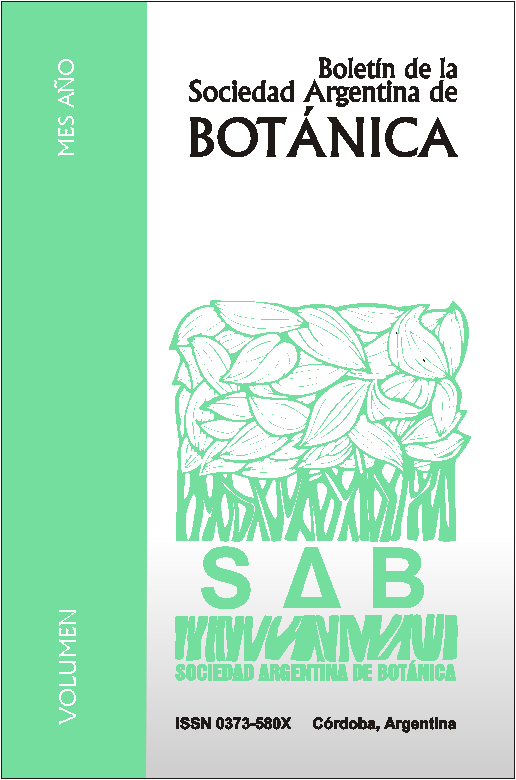Pollen of species from the genus Nicotiana (Solanaceae) present in Chile: Evaluation of the usefulness of morphological characters as biomarkers in archaeological studies.
DOI:
https://doi.org/10.31055/1851.2372.v51.n1.14423Keywords:
Tobacco, nicotin, biomarker, pollen.Abstract
Pollen of species from the genus Nicotiana (Solanaceae) present in Chile: Evaluation of the usefulness of morphological characters as biomarkers in archaeological studies. The alkaloid nicotine is taken up when Nicotiana plants are smoked, chewed or snuffed. The use of tobacco has been detected by the presence of nicotine in the residues of archaeological pipes and also in mummified human hair; however, the lack of species-specific markers has made it impossible to determine the Nicotiana species involved. Pollen has been used as a reliable biomarker for identifications at the family or genus levels. We report herein the study of pollen from 10 native species of Nicotiana from Chile, including the wild N. glauca and the cultivated N. tabacum, using both optical and scanning electron microscopy. The results show minimal interspecific qualitative differences. Although the mean values of ratio polar and equatorial diameters in an equatorial view, colpus length and exine thickness show statistically significant differences, the data variance does not allow its use in the identification of Nicotiana at the species level and therefore the usefulness of pollen as a biomarker is limited at the species level.Downloads
Published
Issue
Section
License
Provides immediate and free OPEN ACCESS to its content under the principle of making research freely available to the public, which fosters a greater exchange of global knowledge, allowing authors to maintain their copyright without restrictions.
Material published in Bol. Soc. Argent. Bot. is distributed under a Creative Commons Attribution-NonCommercial-ShareAlike 4.0 International license.





